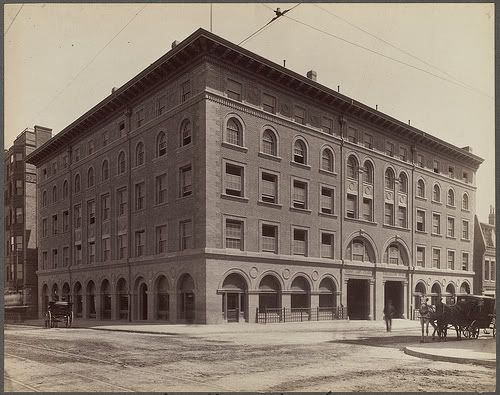I love the fascist arch. Looks like Nazi rally.
Is that a theater on Norway Street?
Goose -- actually the idea of a triumphant arch goes back a lot further (to say Roman times)
However in Boston specifically -- They built a large temporary arch (desined by Bulfinch) for the triumphant return of President George Washington in fall 1789
http://teachhistory.com/tag/washingtons-visit-to-boston/
"....The nation’s first president rode along Orange, Newbury, Marlborough, and Cornhill streets (all later named Washington Street in honor of his visit). On this path, President Washington went by the Old South Meeting House – a spot he had visited in 1776 to see the destruction done to the building by the British troops when they occupied Boston. Reaching the State House (today’s Old State House), the President passed through a richly decorated Triumphal Arch, designed by architect Charles Bulfinch, which spanned from the west end of the building to the stores on the opposite side of the street. This arch had a canopy above it over 20 feet high with an eagle perched on top.
The President then entered the State House, went upstairs, strode through the Representatives’ Chamber, walked out the center window and took four steps down to the gallery of the Colonnade – a colonial reviewing stand of sorts erected for the occasion at the west end of the State House. This reviewing stand stood atop six large columns, fifteen feet high, and the floor of its gallery was furnished with armed chairs and spread with rich carpets. When President Washington entered the Colonnade, he was saluted by three huzzas from the citizens, and an Ode was sung.
The Procession passed him, proceeded into Court Street and was dismissed. Military companies then escorted the President to his residence in Court Street, Ingersoll’s Inn, where he would stay during his five day visit.
That evening, fireworks were exhibited in several parts of the town – in State Street, the Bunch of Grapes Tavern, Eastern Coffee House, the Castle and from the French Ships, which were beautifully illuminated......






